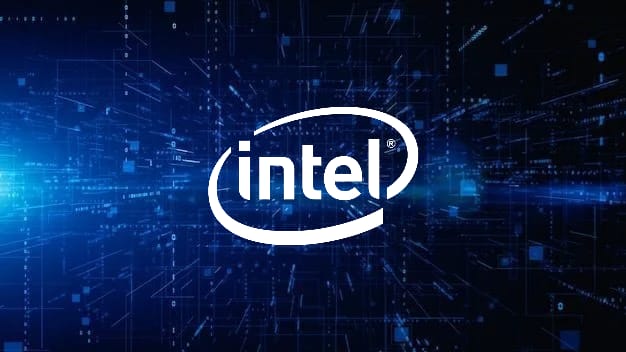OpenVINO: A Brief Overview
Introduction
OpenVINO, or Open Visual Inference and Neural Network Optimization, is a valuable tool in the disciplines of deep learning and computer vision. It’s more than just a framework; it’s a complete toolkit for harnessing neural networks in a wide range of applications, particularly those requiring real-time inference. In this section, we will be discussing what OpenVINO is, essentials of OpenVINO™, its utility, applications, benefits, and how it compares to other deep learning frameworks.
What is OpenVINO?
Developed by Intel, OpenVINO is an open-source toolkit that makes it easier to implement deep learning models on a variety of Intel hardware platforms. It is an essential component of neural network optimization, with a robust architecture that improves inference performance on FPGAs, VPUs, GPUs, and Intel CPUs.
Fundamentally, OpenVINO tackles the problem of bridging the gap that exists between the development of deep learning models and their practical application/deployment. It eliminates the difficulties usually involved in going from prototype to production by giving developers a unified platform. Developed solutions can be seamlessly integrated into a wide range of applications.
The entire objective of the toolkit is to ensure that the “write-once, deploy-anywhere” concept works flawlessly. This toolkit enables developers to construct solutions that operate with any hardware, allowing all Intel-powered devices to perform optimally. The platform enables developers to fully leverage Intel’s hardware portfolio, whether by boosting a CPU’s computing capacity or leveraging a GPU’s parallel processing capabilities.
Its smooth integration with an advanced C++ Inference Engine API is one of OpenVINO’s most notable characteristics. YOLO v8 and other state-of-the-art models, together with a variety of industry standards like ResNet50 and YOLO v3, can be installed with ease by developers thanks to this interface. Developers can use frameworks like TensorFlow, PyTorch, or ONNX without compromising on functionality or speed because to the toolkit’s support for several model formats.
Why use OpenVINO?
The adoption of OpenVINO can be attributed to its ability to resolve problems faced by real-time applications that rely on deep learning models. The improvements are especially noticeable in industries like security and surveillance, where it’s essential to detect objects, anomalies, or occurrences quickly and precisely. Fast decision-making in dynamic environments requires the ability to use Intel’s hardware-accelerated inference capabilities, which the toolkit ensures even the most complex deep learning models may achieve almost instantaneous outcomes.
OpenVINO is revolutionizing diagnosis and patient care as a major participant in the medical imaging revolution. By permitting rapid inference on medical imaging data, healthcare practitioners can expedite diagnosis processes, improve patient outcomes, and make treatment decisions more swiftly. The toolbox optimizes deep learning models for Intel hardware, resulting in increased performance and guaranteed compliance with regulatory regulations governing medical devices.
When making split-second decisions that could mean the difference between safety and tragedy in robotics and autonomous cars, OpenVINO is vital. Using Intel’s broad range of hardware platforms, the platform enables developers to create sophisticated perception algorithms that enable automobiles to safely and independently negotiate difficult terrain.
How is OpenVINO used?
By utilizing a set of integrated procedures, OpenVINO simplifies the process of deploying deep learning models on Intel hardware platforms. To begin with, developers use well-known deep learning frameworks such as TensorFlow, PyTorch, or ONNX, to create and train their models. Post that, OpenVINO takes over to optimize inference by feeding the trained models to the Model Optimizer.
The Model Optimizer transforms the trained models as they are fed into it. Optimization is the main goal here. Models are refined to achieve a precise balance between accuracy and efficiency using a number of advanced approaches, including quantization, freezing, and fusing. The result of this optimization procedure is the creation of an Intermediate Representation (IR), which is contained in .xml and .bin files and allows for easy deployment on various Intel hardware platforms.
Now that the trained models are optimized, the Intermediate Representations are fed to Inference Engine. This operation carefully evaluates model compatibility with respect to the training framework and the underlying hardware environment in this situation, making compatibility the most important factor. Ensuring flexibility and interoperability across a varied ecosystem of deep learning frameworks, supported frameworks include TensorFlow, TensorFlow Lite, Caffe, MXNet, ONNX (PyTorch, Apple ML), and Kaldi. Following this, the inference engine quickly and efficiently converts raw data inputs into actionable insights by coordinating the smooth execution of inference operations.
At the deployment phase, the optimal models can be effortlessly deployed on devices such as, edge devices, servers, or cloud infrastructure. These models can be effortlessly integrated into existing application logic to facilitate compatibility.

Advantages of OpenVINO
- Performance Optimization: OpenVINO delivers high-performance deep learning model execution by leveraging Intel’s hardware-accelerated inference capabilities.
- Hardware Agnostic: It offers flexible deployment by supporting a broad variety of Intel hardware, such as CPUs, GPUs, FPGAs, and VPUs.
- Inference Optimization: The toolkit uses a variety of optimization strategies, like pruning, fusion, and model quantization, to improve inference time.
- Friendly Development Environment: Developers can save time and effort by smoothly transferring from model development via popular frameworks like Tensorflow, PyTorch, etc. to deployment.
- Real-Time Inference: The toolkit’s optimizations enable quick real-time inference, crucial for applications requiring low-latency responses.
Disadvantages of OpenVINO
- Steep Learning Curve: OpenVINO’s learning curve can be steep for beginners due to its intricate optimization techniques and hardware-specific optimizations.
- Limited Model Support: While it supports popular frameworks, it may lack compatibility with nice or custom deep learning frameworks, restricting its applicability in certain scenarios.
- Intel Hardware Dependency: OpenVINO’s optimizations are tailored for Intel Hardware, potentially limiting its performance on non-Intel platforms.
Intrigued by the possibilities of AI? Let’s chat! We’d love to answer your questions and show you how AI can transform your industry. Contact Us
Also read about – Enhanced Worker Safety In Oil & Gas Construction With Automated Video Analytics
